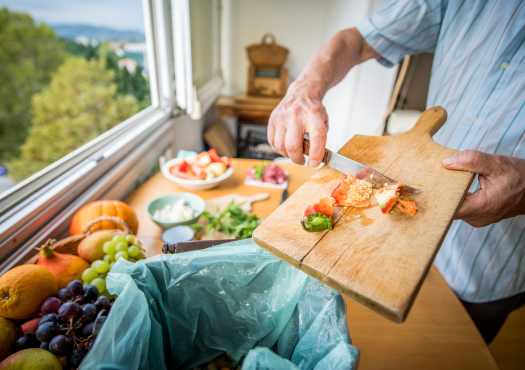By Anne Hogan
Each year, the United States throws out 119 billion pounds of food – almost 40% of all food produced in the country (Feeding America, 2023). Throwing out food wastes the money and resources spent to produce and buy that food, and it reduces the amount of food available to those in need. Additionally, discarding large amounts of food in landfills can be harmful to the environment (Why should we care, n.d.). While food waste can negatively affect individuals and communities, all of us can take steps to reduce wasteful habits.
Causes of Food Waste:
Studies show that food waste in US households occurs as a result of how we buy, eat, and discard food. We tend to over-buy groceries that are on sale or have a “buy-one-get-one” offer, and we are often unable to eat that food before it spoils. Another problem is the incorrect use of the “Best by” and “Sell by” dates on packaging. These dates are usually indicators of food quality, such as taste. However, many consumers discard food after the date, even if the food is still safe to eat. Finally, many of us simply throw away our food scraps, which end up in landfills and can contribute to greenhouse gas emissions (Principato et al., 2021).
Preventing Waste:
How can we reduce food waste? Follow these guidelines from the USDA to prevent waste in your home (Consumers, n.d.):
- Plan Your Meals: Plan ahead and buy only what you need so you can eat it before it spoils.
- Control Your Portions: Only fill your plate with what you will eat – both at home and while eating out.
- Save Leftovers: Practice cooking your leftovers into a second meal or freezing them so you can enjoy them later.
- Watch the Dates: Remember, dates on packages usually indicate quality, not safety (except for infant formula). Check the food itself for signs of spoilage.
- Compost Food Waste*: Recycling and reusing spoiled food keeps it out of landfills. You can compost at your home or with a community-based composting program.
*Visit the EPA website for more information on composting basics.
Summary:
Throwing away good food negatively impacts US families, the economy, and our environment. By making small changes in how we buy, eat, and discard food, we can each do our part to reduce the cost of food waste.
References:
Feeding America. (2023). Food waste and food rescue. Retrieved from https://www.feedingamerica.org/our-work/reduce-food-waste#:~:text=How%20much%20food%20waste%20is,food%20in%20America%20is%20wasted.
Principato, L., Mattia, G., Di Leo, A., Pratesi, C.A. (2020). The household wasteful behaviour framework: A systematic review of consumer food waste. Industrial Marketing Management, 93(2021), 641-649. https://doi.org/10.1016/j.indmarman.2020.07.010
US Department of Agriculture (USDA). (n.d.). Food loss and waste: Consumers. Retrieved from https://www.usda.gov/foodlossandwaste/consumers
US Department of Agriculture (USDA). (n.d.). Food loss and waste: Why should we care about food waste? Retrieved from https://www.usda.gov/foodlossandwaste/why
Anne Hogan is a Graduate Student in Food Science and Human Nutrition at the University of Illinois at Urbana-Champaign.
Image by Sarah Chai from Pexels.















